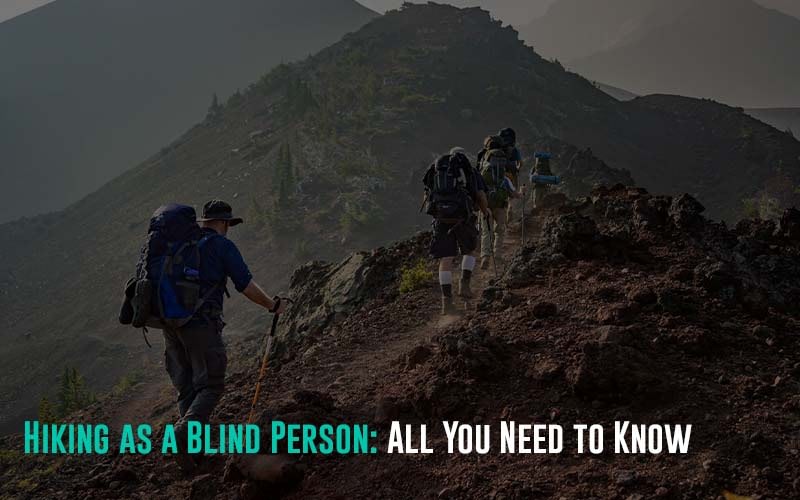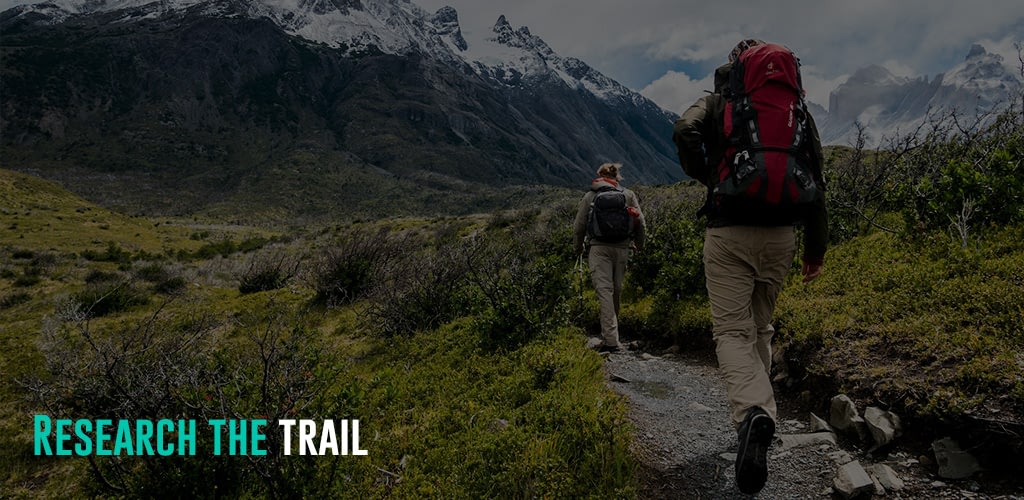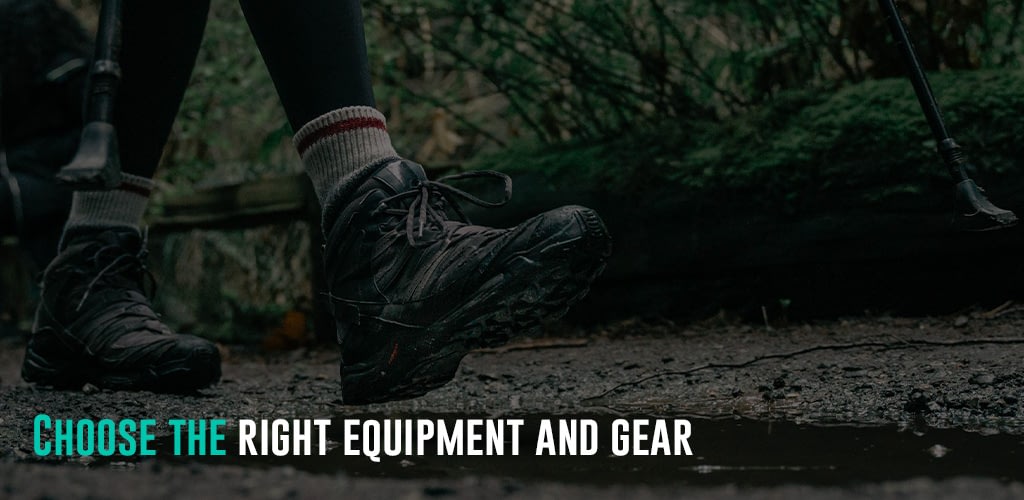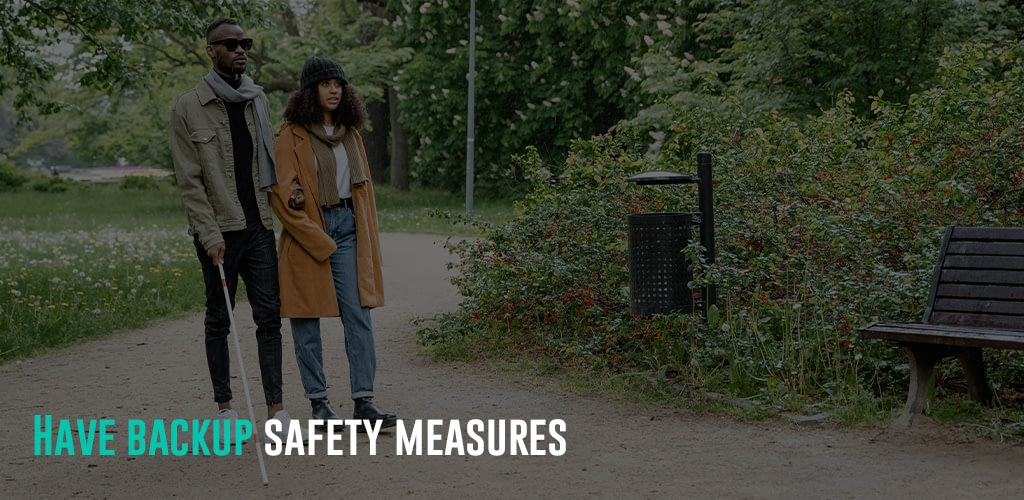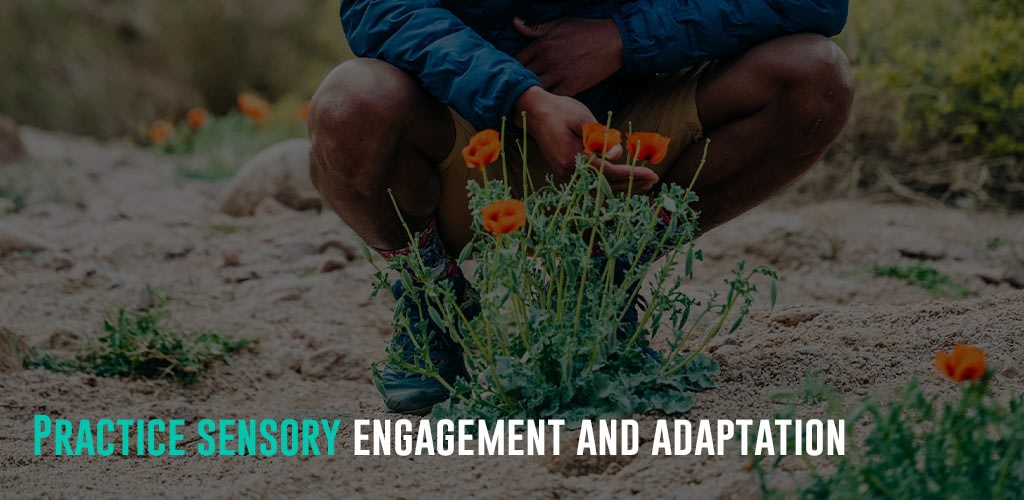Hiking is a great way to get out and enjoy nature, push yourself mentally and physically, and take in all the beauty around you. Even though this activity may seem like a challenge for those with visual impairments, hiking as a blind person is definitely not an impossible feat. With the right attitude, some travel planning, and a helping hand, you can still reap all the benefits of hiking as a blind person. So, if you’re keen to go hiking but don’t know how to plan a trip, read on for all the tips you need to have an amazing time.
Featured Image Source
Research the trail
While hiking is possible and an enjoyable activity even when you are blind, it is important for blind hikers to engage in thorough preparation using a trip planner to ensure a safe experience. If you’re thinking of hitting the trail, make sure to pick one that’s suitable for your skill level and any accessibility needs you have. Take into account the difficulty of the terrain, the length of the route, and what facilities are available. Ask around local hiking organizations or online groups for advice. Once you’ve picked a path, look into more specifics. Look for audio resources, tactile maps, and check out websites and apps that have descriptions and user reviews. If you need extra help, find local clubs that offer guidance for blind hikers.
Choose the right equipment and gear
Choosing the right equipment and gear is important if you want to go successfully hiking as a blind person. For footwear, buy some quality hiking boots or shoes that offer good ankle support, grip, and comfort. Make sure they fit you well and break them in before your trek. You may also want to consider boots with a textured sole for added traction. Trekking poles are also great for stability, support, and balance on uneven ground. Plus, they can be used as a tool to detect obstacles.
Get familiar with navigation aids like talking GPS units, smartphone apps with voice navigation, or handheld compasses before you hit the trail. It’s also a good idea to bring along some extra batteries or portable chargers too, so your devices stay powered up. Use tactile markers like adhesive raised dots or ribbons to mark trail junctions, obstacles, or changes in terrain. You can stick them on objects like tree trunks or rocks to give yourself a handy guide.
Have backup safety measures
It’s always best to have a sighted guide or a reliable buddy by your side when hiking a blind person. They can help you find your way around, describe the scenery, and give you pointers when things get tricky. To make sure you stay in touch with your friends, pack a whistle or two-way radio with you. Make sure to come up with a system of verbal cues or hand signals, so you can easily communicate with each other. Before heading out, memorize emergency numbers and let someone know where you’re going and when you plan to be back.
Practice sensory engagement and adaptation
Though it may be difficult for those who are visually impaired to appreciate the scenery while hiking, there are still plenty of ways to interact with your environment and be safe during the hike. Let your ears be your guide and take in the sounds of singing birds, crunching leaves, and babbling streams. Don’t be afraid to get your hands dirty. Feel the texture of tree bark, rocks, and leaves. Also, don’t forget to take a moment to appreciate the wonderful aromas of wildflowers, fresh earth, and other natural elements.
Be prepared for emergencies
It’s always good to be prepared for all kinds of emergencies when hiking as a blind person. Make sure you have a well-stocked first aid kit on hand with all the necessary supplies. Brush up on your first aid skills and get familiar with how to use the items in your kit before the actual hike. Also, don’t forget to bring along a whistle, a flashlight with extra batteries, an emergency blanket, and a multi-tool for any minor repairs or adjustments you need to make.
Hiking as a blind person may need some additional prep work and adaptations, but the rewards are worth it. If you plan ahead, get the right gear, prioritize safety, and engage your other senses, then you can experience the beauty of nature and have an amazing outdoor adventure. Don’t forget to talk to experienced hikers, join local hiking groups, and look for resources that are specifically designed for blind hikers. With the right attitude and support, anyone can enjoy the wonders of hiking.
Are you trying to figure out where to go? Look no further! Travel-Wise is your go-to trip planner for discovering amazing hiking trails around the world. Check out our itinerary planner and travel itineraries, and we’ll help you plan an unforgettable adventure.

